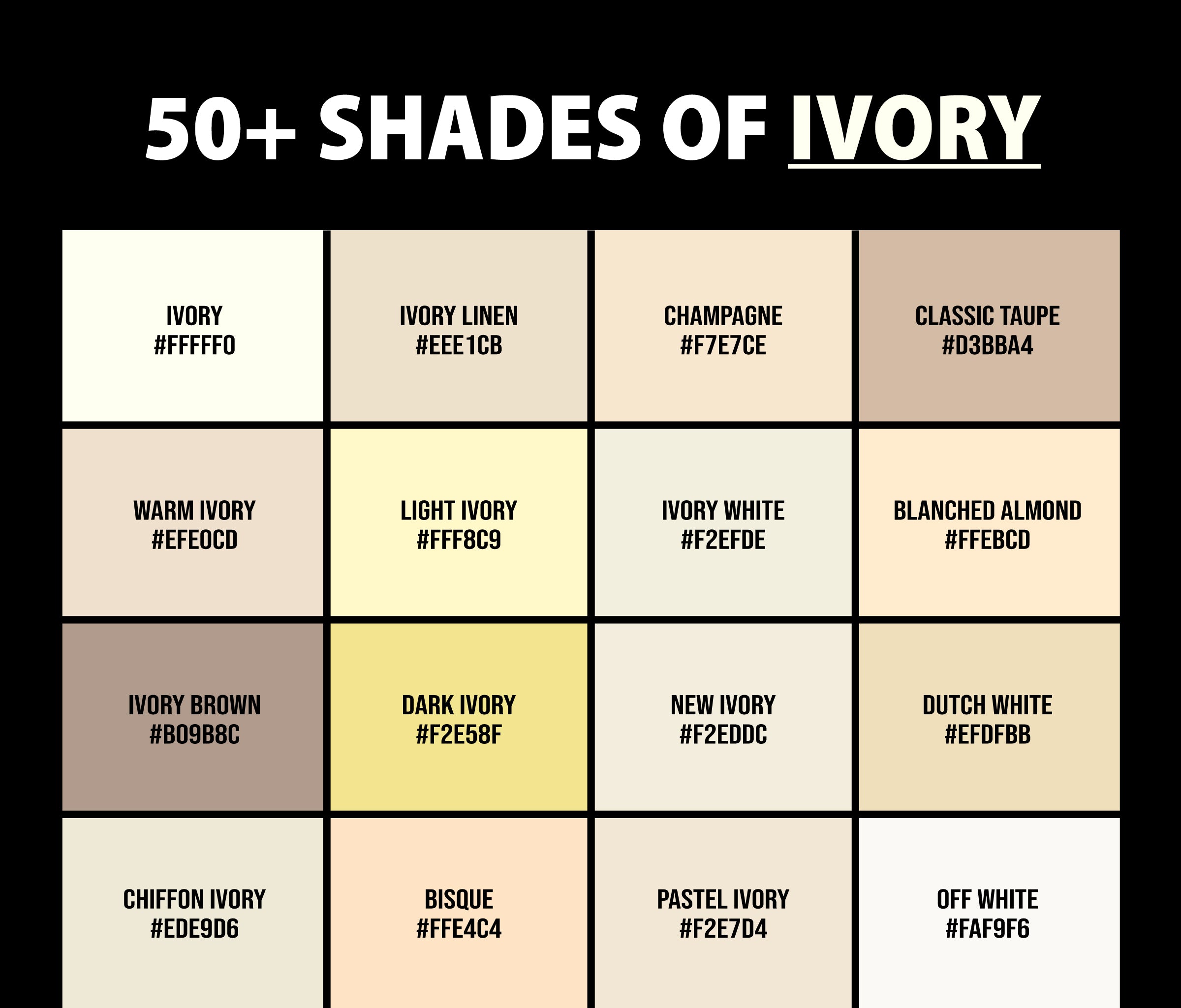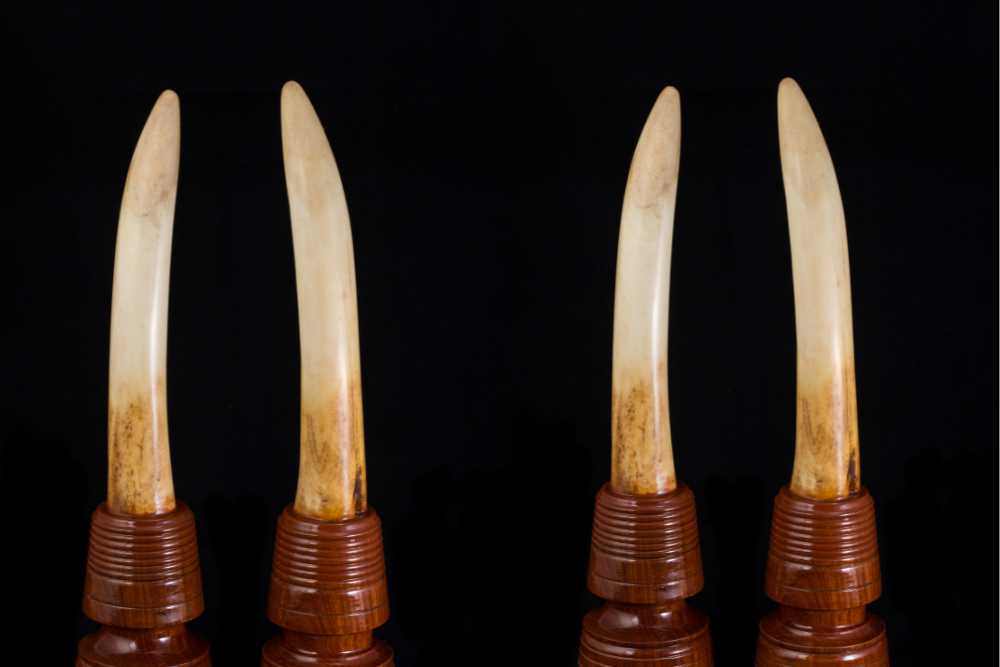Have you ever stopped to think about materials that truly stand the test of time, the ones that seem to carry stories from long ago into our present day? It's a fascinating thought, really, how some substances possess such inherent strength and beauty that they become cherished across generations. So, too it's almost, we find ourselves looking at things that endure, that resist the usual wear and tear, and that have a way of capturing human imagination. This enduring quality, that very resilience, is something we often see in materials that have been valued for centuries, and it prompts us to consider their journey through history.
Today, we're going to talk about something quite special: ivory. And in doing so, we'll explore it through a unique lens, considering what the conceptual pairing of "Ivory Carson and Jordan Willis" might represent. This isn't about specific individuals, but rather about using these names as a way to think about the multifaceted story of this remarkable material. It's a way to appreciate its inherent characteristics and the lasting impact it has had on human culture, you know, across different eras and societies.
We'll look closely at what makes ivory so tough, its ancient roots, and how it has been shaped by human hands into objects of great beauty and meaning. From its physical make-up to its role in art and even the important discussions around its use today, we'll uncover the rich history and complex present of this unique substance. It's a chance, in a way, to deepen your appreciation for materials that truly leave a mark.
Table of Contents
- The Enduring Nature of Ivory: A Look at Its Core Properties
- From Ancient Art to Modern Debates: The Journey of Ivory Through Time
- What Makes Ivory So Special? Addressing Common Questions
The Enduring Nature of Ivory: A Look at Its Core Properties
When we think about materials that have truly stood the test of time, ivory often comes to mind. It's a substance that, in some respects, seems almost indestructible. This remarkable durability is one of its most defining features, and it's a big reason why people have prized it for so long. It’s not just a pretty material; it has a toughness that few others can match, which is pretty amazing when you think about it.
Consider its resistance to damage. Ivory is a very durable material that is not easily damaged or destroyed. You know, it really holds up well against the usual bumps and scrapes that might ruin other delicate items. This innate toughness means that objects made from it can last for incredibly long periods, preserving their form and detail through many years, even centuries. That's a quality, in a way, that truly sets it apart from many other natural substances.
Beyond its general toughness, ivory also has some rather specific resistances that make it quite unique. For instance, it will not burn, which is a significant property for a natural material. This fire-resistant characteristic adds another layer to its enduring nature, suggesting a resilience against even extreme conditions. And, as a matter of fact, it is very little affected by immersion in water. This means that even if it gets wet, its core structure and appearance remain largely unchanged, which is quite impressive for something that comes from living creatures.
You might also find it interesting to learn that ivory is similar to a hardwood in some of its properties. Just like a sturdy piece of oak or maple, it possesses a certain density and firmness that allows it to be carved with great precision and to retain its shape. This comparison helps us to appreciate its robust nature, making it a favored choice for artisans who needed a material that could hold intricate details without easily breaking or deteriorating. So, it's not just a pretty face; it's got real backbone, basically.
Unpacking Ivory's Physical Qualities
Delving a bit deeper into what ivory actually is, we find it's a hard, white material. This distinctive color and feel are immediately recognizable, and they contribute greatly to its aesthetic appeal. It's this very specific look and touch that has captivated people for so long, making it a sought-after substance for various creative endeavors. Its smooth surface, too, is almost inviting to the touch, which adds to its allure.
The origin of this material is quite specific: it's derived from the tusks and teeth of elephants. But it's not just elephants, you know. Ivory also comes from the tusks and teeth of other animals such as walruses, hippopotamuses, narwhals, warthogs, and sperm whales. Even the preserved mammoths, long extinct, provide this valuable substance. This wide range of sources, basically, highlights how diverse the animal kingdom is in producing such a unique material.
When we talk about ivory, we're referring to the dense, hard, white material that comes primarily from these specific animal parts. It’s a very particular kind of substance, not just any bone or tooth. This distinctiveness, in a way, contributes to its perceived value and uniqueness. The term "ivory" itself originated with the Latin word "eboreus" and came to us through the Old French "yvoire." While it often brings elephants to mind, the term ivory may be confined to the material that comprises the tusk of the elephant, although, as we've seen, other animals also contribute similar materials. It’s a word with a long history, just like the material it describes.
A hard white substance that is a variety of dentin, ivory makes up the tusks of such animals as elephants, walruses, and preserved mammoths. This is a key point: it's not enamel, but dentin, which is a calcified tissue. It is prized for its beauty, durability, and the way it can be worked. The qualities of the ivory gem type, including stone colors, common names, and gemstone hardness, are often listed in guides, showing its place among other valued natural materials. It’s quite a remarkable material, honestly, with properties that make it stand out.
Ivory is the hard, smooth substance, composed primarily of dentin, that constitutes the tusks, or upper incisors, of elephants (family elephantidae), including the extinct mammoths (genus mammuthus). This specific anatomical origin is crucial to understanding what ivory truly is. It's not just any part of an animal; it's a very particular growth, designed for specific purposes in the animal's life, that humans later discovered could be transformed into beautiful objects. You know, it's a natural wonder, in a sense.
The Chemical Makeup and Origin Story
To truly appreciate ivory, it helps to understand its basic building blocks. It is composed mainly of dentin — a calcified tissue. This calcified tissue is what gives ivory its characteristic hardness and density. It's not just a random collection of cells; it's a highly organized biological structure that has evolved over millions of years to be incredibly strong and resilient. Basically, it's a natural marvel of engineering.
The chemical composition of ivory is mainly calcium phosphate. It's very close to (ca3oh)2 (po4)6ca4 with some organic matter. This specific chemical formula gives it its unique properties, allowing it to maintain its integrity against various environmental factors. This blend of mineral and organic components is what makes it so tough and yet so workable for artisans. It's quite a precise natural formula, you know, that results in such a durable material.
Ivory refers to the dense, hard, white material derived primarily from the tusks and teeth of certain animals. This definition emphasizes its origin and its core characteristics. It's a legacy of larger mammals, a testament to the grand scale of nature's creations. The very existence of ivory connects us to these magnificent creatures and the wild spaces they inhabit, reminding us of a time when these animals roamed freely. It’s a powerful connection, in a way, to the natural world.
From Ancient Art to Modern Debates: The Journey of Ivory Through Time
For centuries, ivory has played a significant role in human culture and artistic expression. It has been used to create jewelry and other works of art, as well as religious artifacts and musical instruments. This long history of use highlights its enduring appeal and versatility as a material for creative endeavors. From delicate carvings to powerful statues, ivory has served as a canvas for countless artists and craftspeople, which is pretty cool, if you ask me.
The artistic legacy of ivory is vast and varied. Think of the intricate details carved into ancient ceremonial objects or the smooth keys of a piano. These creations speak volumes about human ingenuity and the desire to transform natural materials into something meaningful and beautiful. This long tradition, you know, shows how deeply intertwined ivory has been with human history and our artistic impulses. It’s quite a story, really, when you consider all the things it has been used for.
A Legacy in Art and Culture
The beauty and durability of ivory made it an ideal choice for items meant to last and be cherished. From small, personal ornaments to larger, more public displays, its smooth texture and ability to hold fine detail made it perfect for intricate work. This is why we see it in so many different cultural contexts, from ancient Roman figurines to elaborate Asian screens. It’s a material that has transcended geographical and historical boundaries, basically, because of its inherent qualities.
Consider its use in musical instruments. The keys of many older pianos, for instance, were often made of ivory, providing a unique feel and sound. This practical application, alongside its artistic uses, shows how deeply it was integrated into daily life and cultural practices for a long time. It’s not just for show; it had a functional beauty, too, which is quite interesting. Learn more about natural materials on our site, and link to this page here for more on historical artistry.
The word "ivory" itself, as we discussed, has roots stretching back to Latin and Old French, reflecting its long presence in human language and consciousness. This linguistic journey mirrors the material's own journey through history, from its natural source to its transformation into objects of human creation. It’s a powerful reminder, in a way, of how language and materials are often connected in our shared story. And that, you know, is a pretty neat thing to think about.
Understanding Today's Ethical Questions
While ivory's historical significance is undeniable, its continued use today raises very important ethical questions. Understanding what ivory is and how it has been used can deepen your appreciation for this unique material and raise awareness about its ethical implications today. This awareness is crucial in our modern world, where conservation and animal welfare are pressing concerns. It’s a shift, you know, in how we view and value certain natural resources.
The primary concern revolves around the sourcing of new ivory. The demand for this material has historically led to severe impacts on animal populations, particularly elephants, which are now protected species. This has led to international agreements and bans on the trade of new ivory, aiming to protect these magnificent creatures from further harm. It’s a really serious issue, honestly, that demands our attention.
Today, the focus is often on antique or pre-ban ivory, which can be legally traded under strict conditions in some places. However, the complexity of distinguishing new from old ivory makes enforcement challenging, and the black market for illegally sourced ivory remains a significant problem. This ongoing struggle highlights the need for continued vigilance and education about the origins of ivory products. It’s a tricky situation, to be honest, with a lot of moving parts.
The conversation around ivory is a prime example of how our relationship with natural resources has changed over time. What was once a readily available material for art and utility is now a symbol of conservation efforts and ethical responsibility. It prompts us to consider the true cost of beauty and the impact of our choices on the natural world. This shift in perspective, in a way, is a sign of our growing understanding of ecological balance. You know, it's about making more thoughtful decisions.
For more information on global efforts to protect wildlife and address the illegal ivory trade, you might want to check out organizations like the World Wildlife Fund (WWF), which provides extensive resources on conservation efforts worldwide. They are doing some really important work, basically, to safeguard these animals for future generations.
What Makes Ivory So Special? Addressing Common Questions
People often wonder what truly sets ivory apart from other materials. Its combination of specific physical and chemical properties, along with its historical significance, makes it quite unique. It’s not just one thing, but a whole collection of attributes that have contributed to its long-standing appeal. That, you know, is what makes it so fascinating to study and appreciate.
Is ivory truly indestructible?
While ivory is a very durable material that is not easily damaged or destroyed, it's not entirely indestructible. It resists burning and is little affected by water, and it's quite hard, similar to hardwood. However, like any material, it can be broken or worn down over very long periods or under extreme force. It's exceptionally tough, yes, but not absolutely immune to all forms of harm. It's tough, but not, like, invincible, you know?
What is ivory primarily made of?
Ivory is composed mainly of dentin — a calcified tissue. This is the primary substance that gives it its structure and hardness. The chemical composition is mainly calcium phosphate, close to (ca3oh)2 (po4)6ca4, with some organic matter mixed in. This unique blend of mineral and biological components is what gives ivory its distinctive properties, making it different from regular bone or tooth enamel. So, it's basically a special kind of dentin, actually.
Why has ivory been used for centuries?
Ivory has been used for centuries because of its beauty, durability, and its workability. It’s a hard, white material that can be intricately carved, allowing artists to create detailed jewelry, works of art, religious artifacts, and even musical instruments. Its ability to last for a very long time also meant that creations made from it could be passed down through generations, preserving their beauty and meaning. It's a material that, in a way, was perfectly suited for both art and utility, which is pretty cool.
So, as we consider "Ivory Carson and Jordan Willis" not as people, but as a conceptual framework, we gain a richer appreciation for ivory itself. It’s a material that embodies both incredible natural resilience and a complex human story. From its origins in magnificent creatures to its transformation into objects of beauty and its current role in ethical discussions, ivory truly has a story that continues to unfold. It reminds us, you know, that every material has a past, a present, and a future shaped by our interactions with it. It's a pretty powerful idea, honestly, to think about.



Detail Author:
- Name : Macy Buckridge
- Username : chance.blick
- Email : mkuhn@boehm.com
- Birthdate : 2004-10-27
- Address : 147 Wiza Garden Lake Jarod, TX 49846
- Phone : (503) 901-9063
- Company : Schneider and Sons
- Job : Director Of Business Development
- Bio : Beatae eum et omnis ipsa dolorem deleniti. Debitis corporis inventore earum corporis illo voluptas et deserunt. Exercitationem consequatur asperiores aut cumque ipsa harum alias.
Socials
linkedin:
- url : https://linkedin.com/in/marcella_williamson
- username : marcella_williamson
- bio : Voluptates aliquid excepturi quae ex beatae.
- followers : 3969
- following : 995
twitter:
- url : https://twitter.com/williamson2000
- username : williamson2000
- bio : Voluptatum at cum tempore. Perferendis voluptatem labore animi quis. Atque quos dignissimos tenetur accusantium et beatae. Expedita delectus odio occaecati.
- followers : 1067
- following : 222
facebook:
- url : https://facebook.com/marcella_id
- username : marcella_id
- bio : Fugiat autem rerum dolor voluptatem debitis. Rerum sed quia culpa nisi.
- followers : 3776
- following : 2766